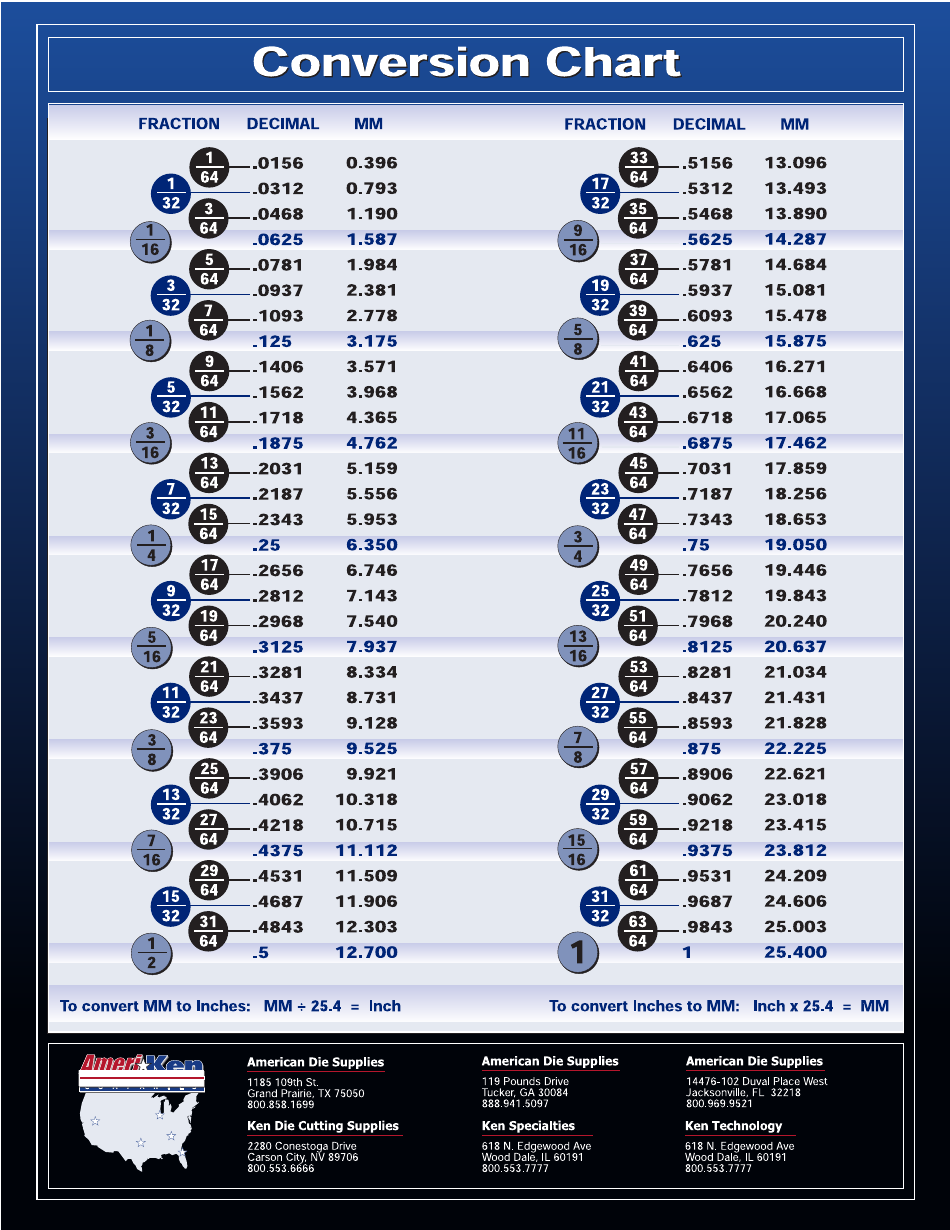
Like other systems, the "Imperial" had some slight variations between the adopted standards, i.e.: an inch in England was not exactly the same as a Canadian inch and the Imperial gallon differed from the American gallon, these and other differences generated numerous technical-commercial problems. ) as well as the use of some units such as the gallon in chemicals (1/4 = 900 mL), gold in ounces, construction steel gauges, tire sizes ( 14″ ), many screws are still marketed in inch and even the screens of televisions and phones released in inches.

In our daily lives is common the use of such fractions ( 1/4 pound, 3/4 gallon. Inches to Millimeter fractions to decimals Formula: 1 inches (in) 25.4 Millimeters (mm) Example: you want to convert 20 inches to Millimeters. According to formula > 10mm 0.393701 Inches. The hardest thing in this conversion is to simplify the fraction, otherwise the operation is fairly trivial. If you need to convert a decimal number to fraction, the above decimal to fraction calculator is a great way to do it quickly and easily on any device. The Metric System uses 10 as divisor and the Imperial System uses 12 divisible by 2, 3, 4 and 6. Example: you want to convert 10mm to inches. Conversion from decimal numbers to fractions. A lot of people look for the 1.3 mm to inches ’ conversion because this measurement is widely used.


By the advantages it has been adopted by many countries, currently only a few do not, which facilitates scientific work and trade relations. 10 MM to Inches 10 MM in Inches 50 MM to Inches 50 MM in Inches 100 MM to Inches 100 MM in Inches 1.3 MM Equal to How Many Inches To answer that question right off, 1.3 millimeters is equivalent to 0.051181 inches. The Metric SystemThe Metric System was officially created in France in 1790. In these cases, the thousandth inch measurements "thousand" or "thou" (invented by Whitworth, the same as the threads) are more used and are equivalent to 1"/1000 LimitsIn practical terms it is rare to find denominators greater than 64.


 0 kommentar(er)
0 kommentar(er)
